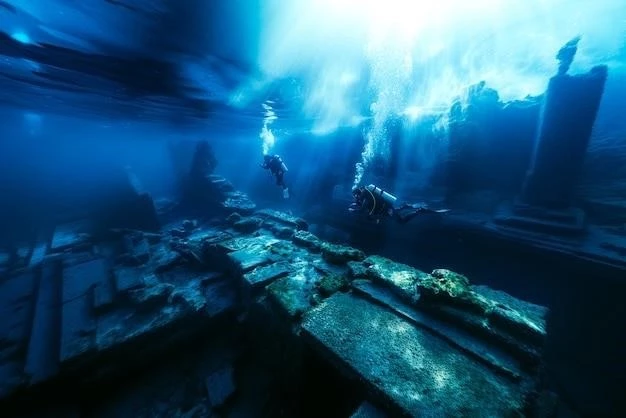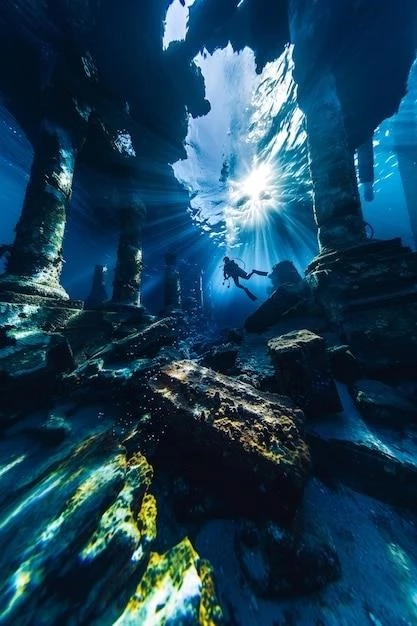The deep sea, a realm of perpetual darkness and crushing pressure, is home to some of Earth’s most extraordinary creatures․ Among them, a peculiar phenomenon stands out: deep-sea gigantism, where organisms grow to colossal sizes compared to their shallow-water counterparts․ This intriguing phenomenon has captivated scientists and the public alike, prompting extensive research and fueling countless speculations about its underlying mechanisms․

A Tale of Two Worlds: Surface vs․ Depths
The surface waters, bathed in sunlight and teeming with life, exhibit a different size distribution than the abyssal depths․ Smaller organisms dominate the shallows, where resources are abundant and competition fierce․ The deep sea, on the other hand, presents a stark contrast․ Limited food availability and extreme conditions necessitate adaptations for survival, leading to an evolutionary trajectory favoring larger body sizes․
The Enigmatic Drivers of Gigantism
The reasons behind deep-sea gigantism are multifaceted and still being unraveled․ Several hypotheses have been proposed to explain this phenomenon, each offering a piece of the puzzle:
1․ Food Scarcity and Slow Metabolism
The deep-sea environment is characterized by a scarcity of food․ Organisms have to make the most of their limited resources, leading to slow growth rates and extended lifespans․ This slow metabolism allows for the accumulation of biomass, resulting in larger body sizes․ Furthermore, larger bodies provide a greater surface area for absorbing nutrients from the sparse food supply․
2․ Reduced Predation Pressure
The deep sea is a less predator-rich environment compared to shallow waters․ This reduced predation pressure allows for the evolution of larger body sizes, as there is less selective pressure against gigantism․ Larger organisms are better equipped to defend themselves against predators and compete for resources․
3․ Cold Temperatures and Oxygen Levels
The cold temperatures and low oxygen levels in the deep sea can also influence body size․ Cold temperatures slow down metabolism, allowing for greater longevity and growth․ Lower oxygen levels may also favor larger organisms with more efficient respiratory systems․
4․ Deep-Sea Hydrostatic Pressure
The immense pressure in the deep sea can have a profound impact on the physiology and morphology of organisms․ Some studies suggest that hydrostatic pressure may promote gigantism by influencing the growth and development of tissues․
Notable Examples of Deep-Sea Gigantism
The deep sea is home to a remarkable array of giant creatures, showcasing the pervasiveness of gigantism in this extreme environment․ Here are a few notable examples:
- Giant Isopods: These crustaceans, reaching lengths of over 16 inches, are scavengers that feast on dead organisms․
- Giant Squid: These elusive cephalopods can grow to enormous sizes, with some specimens exceeding 40 feet in length․ Their colossal bodies are believed to be an adaptation for hunting large prey in the deep sea․
- Giant Tube Worms: These sedentary filter feeders, reaching lengths of over 8 feet٫ thrive in hydrothermal vent ecosystems․ Their symbiotic relationship with bacteria allows them to extract energy from chemical compounds released from the vents․
- Giant Sea Spiders: These arthropods, with leg spans exceeding 2 feet, are predators that feed on small invertebrates․
Unanswered Questions and Future Research
Despite extensive research, the mysteries of deep-sea gigantism remain partially unsolved․ Future research will continue to investigate the complex interplay of factors that drive this phenomenon․ Areas of interest include:
- The specific mechanisms by which hydrostatic pressure influences growth and development․
- The genetic basis of gigantism in deep-sea organisms․
- The role of environmental changes, such as climate change, on the prevalence of gigantism․

The Significance of Deep-Sea Gigantism
Understanding deep-sea gigantism is not merely a matter of scientific curiosity․ It has significant implications for our understanding of evolution, biodiversity, and the functioning of marine ecosystems․ This phenomenon highlights the remarkable adaptability of life and the unique pressures that shape the evolution of organisms in extreme environments․ As we continue to explore the deep sea, we gain a deeper appreciation for the vast diversity and hidden wonders of our planet․










